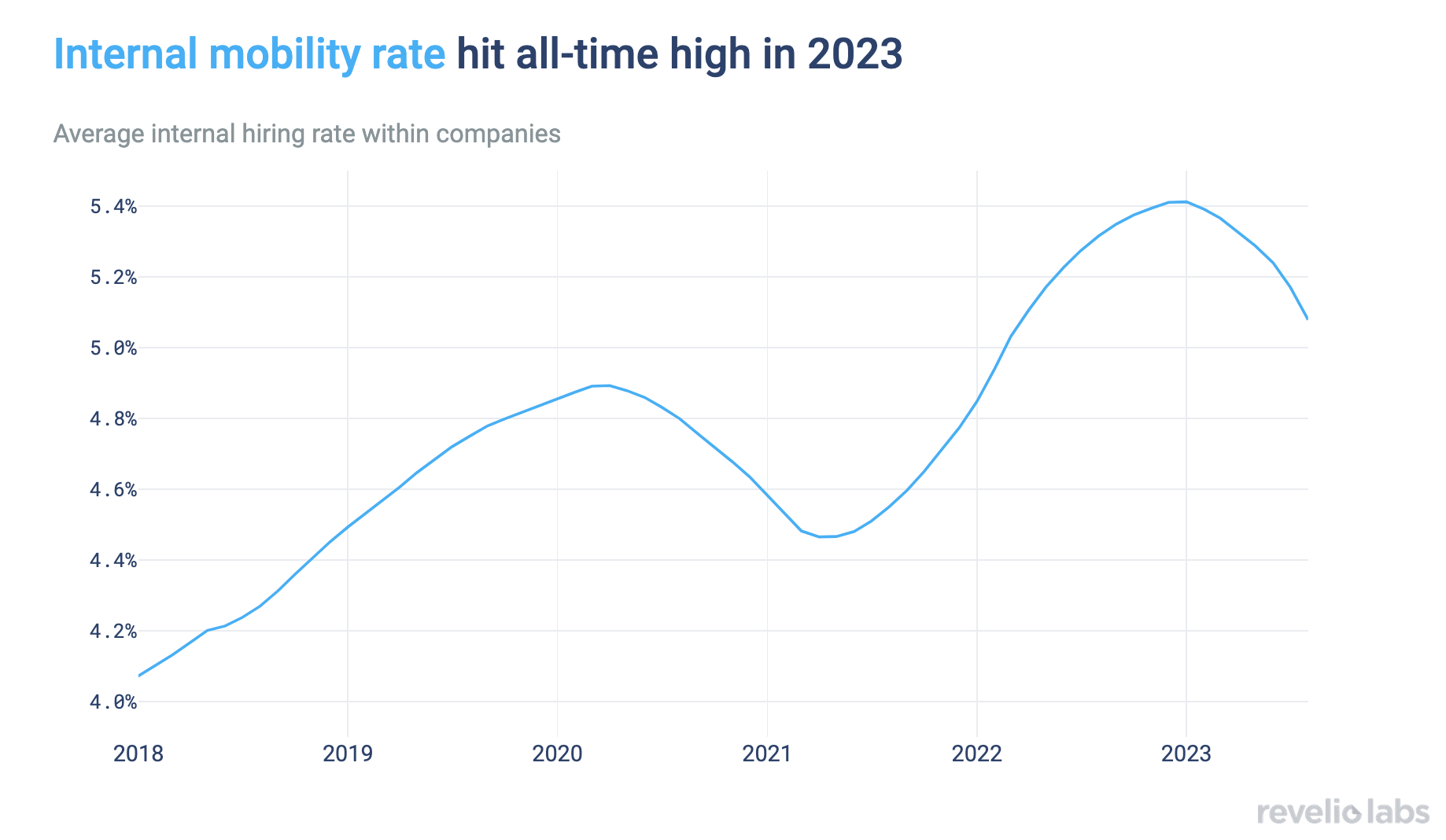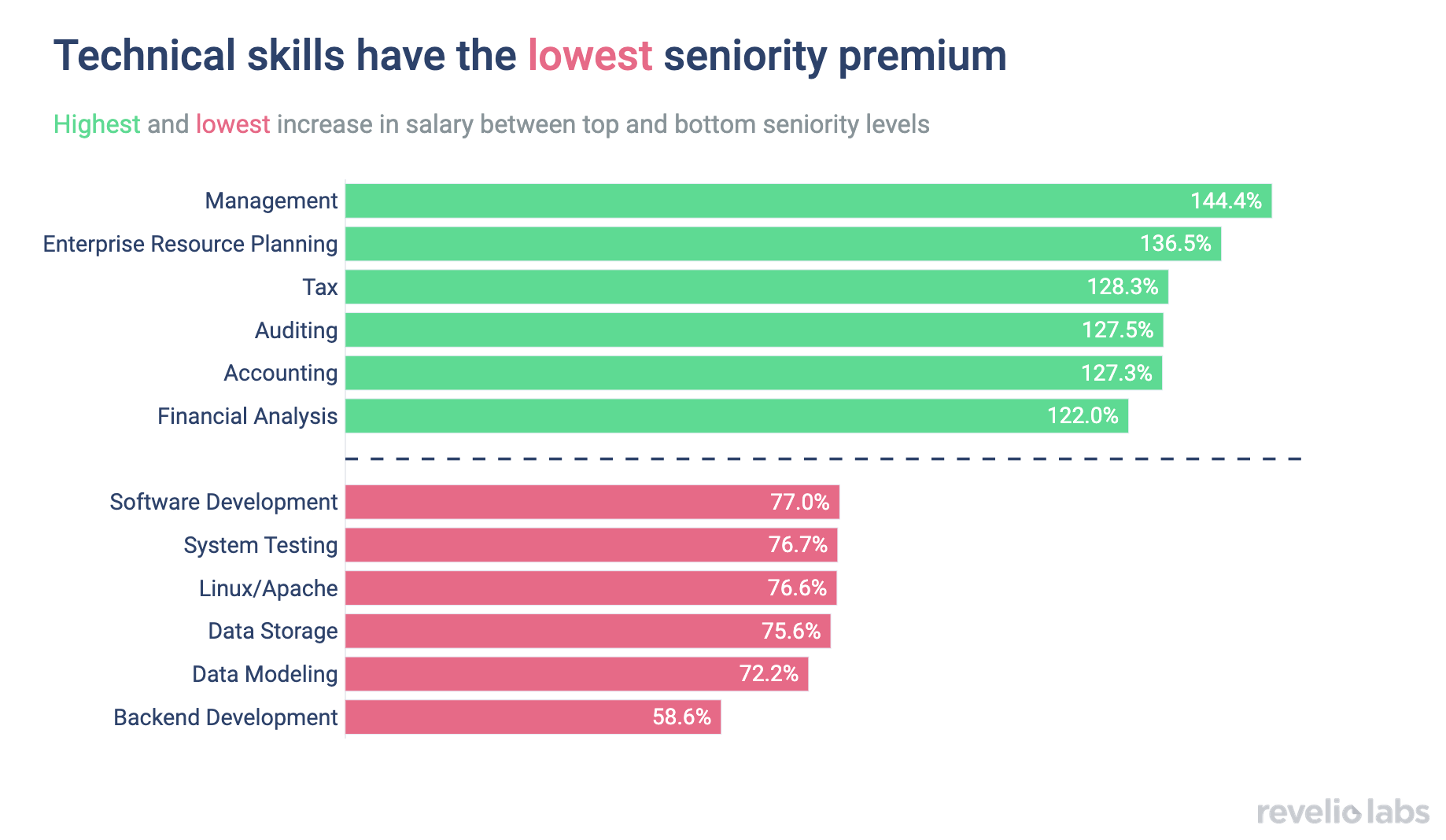How Much Does a Promotion Buy You?
Career ladders are made of uneven steps

Due to increased uncertainty in the labor market, internal hiring and promotions have hit an all time high in 2023.
Not all promotions are created equal. Generally, the largest salary increases occur at the earliest stages of peoples’ careers, with promotions also occurring more frequently at this stage.
Roles that require more on-the-job learning, such as sales and operations roles, see the highest salary increases after promotions. In contrast, jobs that require skills that are more likely to be acquired in school, such as coding and data analysis, get less of a salary bump.
Due to increased uncertainty in the labor market, internal hiring and promotions have hit an all time high in 2023 as employers aim to retain their workforce and reduce hiring costs. While promotion is one way through which companies can retain talent, how beneficial is it for employees to receive a promotion? Although we expect workers with higher seniority to earn more, seniority is not the only factor that determines how much a worker earns over the course of their career. The impact a higher seniority level has on salary can vary by occupation, skill set, and current seniority.


Getting promoted doesn’t always come with a big increase in salary. We find in our workforce data that salary bumps are generally the largest during the early stages of one’s career. The exception to that are promotions to executive positions, which result in an average salary increase of 67%. This uneven progression of salaries across seniority levels means that some of the biggest gains in salary are for promotions from entry level positions, suggesting decreasing returns to seniority over time. Promotions to higher seniority levels also happen faster early on.
Sign up for our newsletter
Our weekly data driven newsletter provides in-depth analysis of workforce trends and news, delivered straight to your inbox!


Salary progression over seniority can also differ across occupations. Economic theory suggests that jobs that require more on-the-job learning have larger salary bumps than jobs that require more in-school training. Jobs that require more on-the-job learning often start out at lower salaries that grow with the accumulation of experience. As Revelio Labs tracks salary bumps for different roles, we see this pattern clearly: roles that require more on-the-job learning, such as sales and operations roles, have the highest salary bumps over the course of the career. In contrast, jobs that require skills that are more likely to be acquired in school, such as coding or data analysis, have lower returns to promotions.


Tracking salary bumps for skills instead of occupations gives us further insight into what drives this pattern. As expected, our workforce data show that skills that are more likely to be acquired in school have some of the smallest salary bumps, whereas skills that require fine tuning and on-the-job practice such as management, taxes, and financial analysis have the largest returns to promotions.



